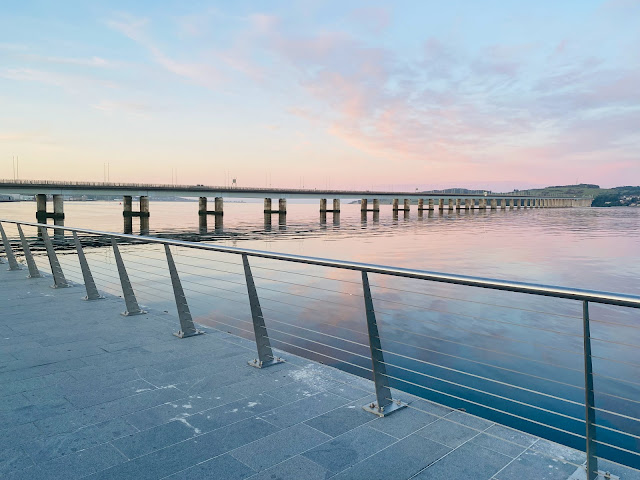Missing the Michael Clark exhibit at the V&A Design Museum in Dundee disappointed me more than anything else on the trip. The museum was closed the only day we could visit the Cosmic Dancer.
But Randy said the building itself should not be missed. Indeed, it overlooks the Firth of Tay and anchors a 30-year waterfront development project begun in 2001.
Although Dundee, the former jute capital of the world, is Scotland's fourth largest city and second-most densely populated, you never would have guessed from the streets downtown. We encountered more statues than citizens during our evening stroll. Admiral Adam Duncan captured 11 Dutch ships in the Battle of Camperdown, a major victory for the Royal Navy in 1797.
The National Health Service administered 130,000 vaccinations at Caird Hall during the covid pandemic. You can see the Ladyboys of Bangkok perform there at the end of July.
Masks are very much yesterday's accoutrement in Scotland.
There may not be any crocodiles in Dundee, but this statue commemorates Bruin, the polar bear that terrorized the city after he escaped his handlers in 1878.
Few pedestrians could be found on the waterfront, either.
But there were plenty of locks left behind by lovers.
Ships, too. Like the RSS Discovery, the first ship to be built for scientific research and heavily influenced by Dundee's 19th century whaling industry. Robert Scott and Ernest Shackleton successfully sailed her to the Antarctic in 1901. Notice the absence of portholes, due to the strength and insulation required for safety of the crew.
Did you know that ships could serve as lighthouses? Here's the last one in Scotland.
















No comments:
Post a Comment